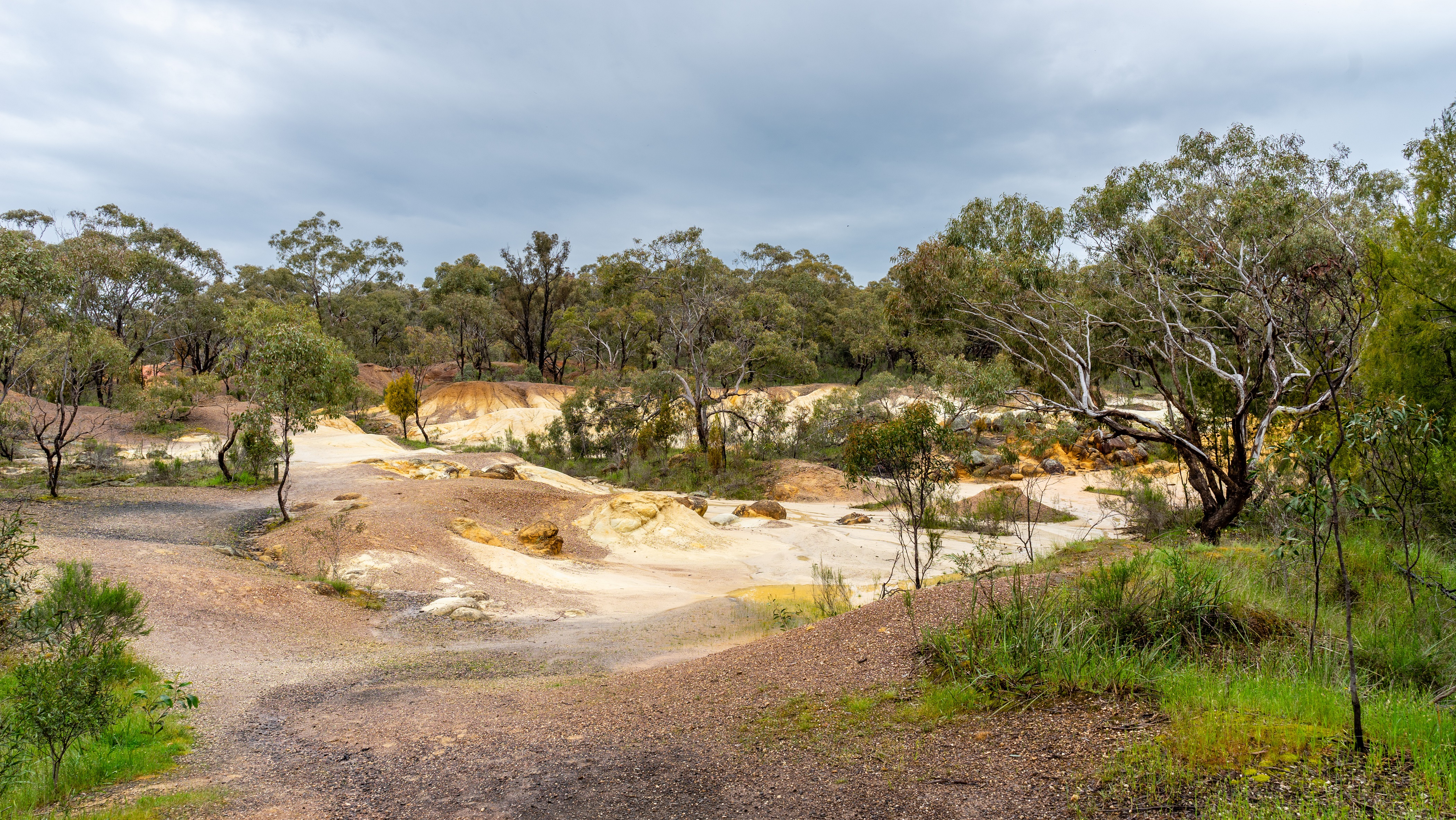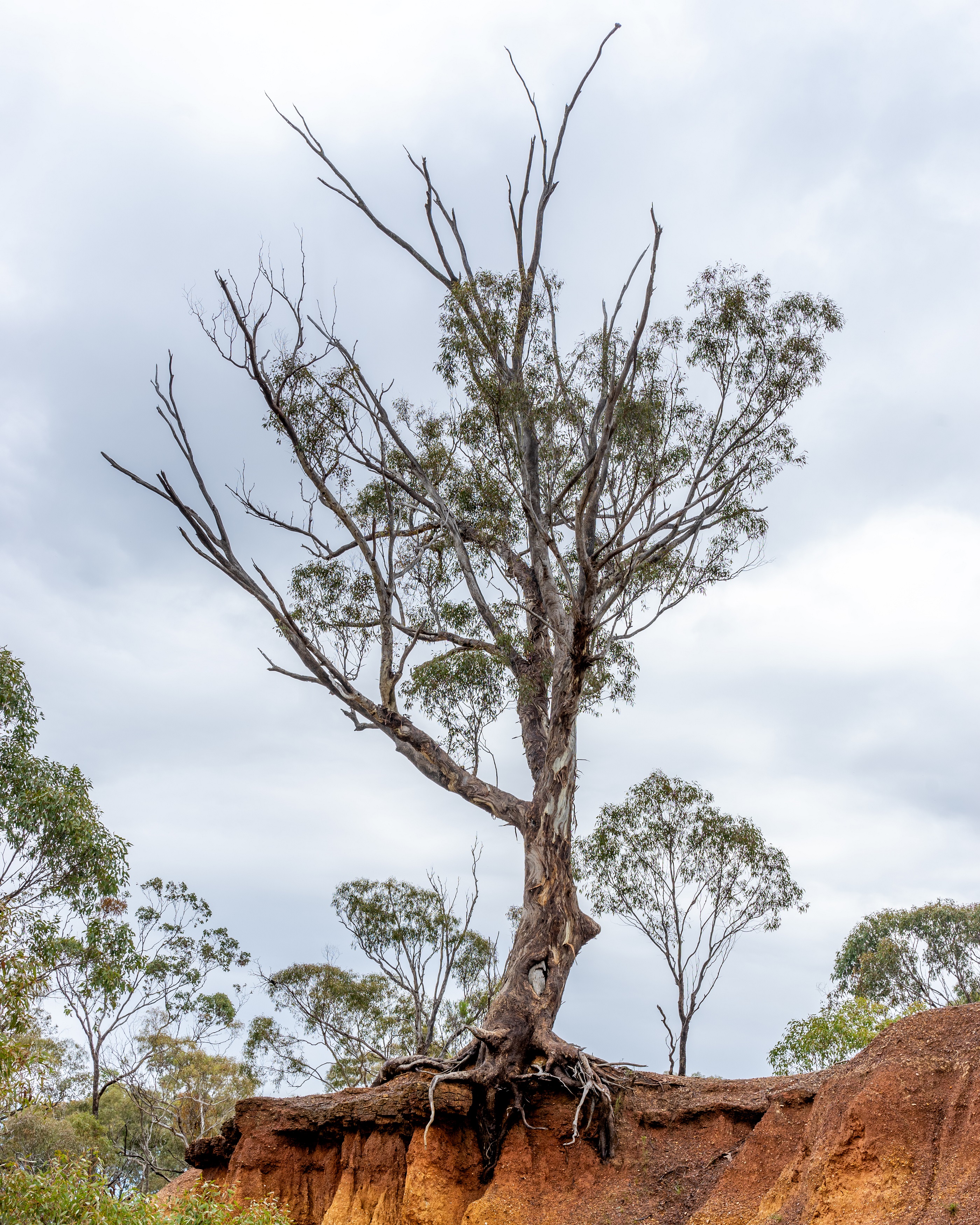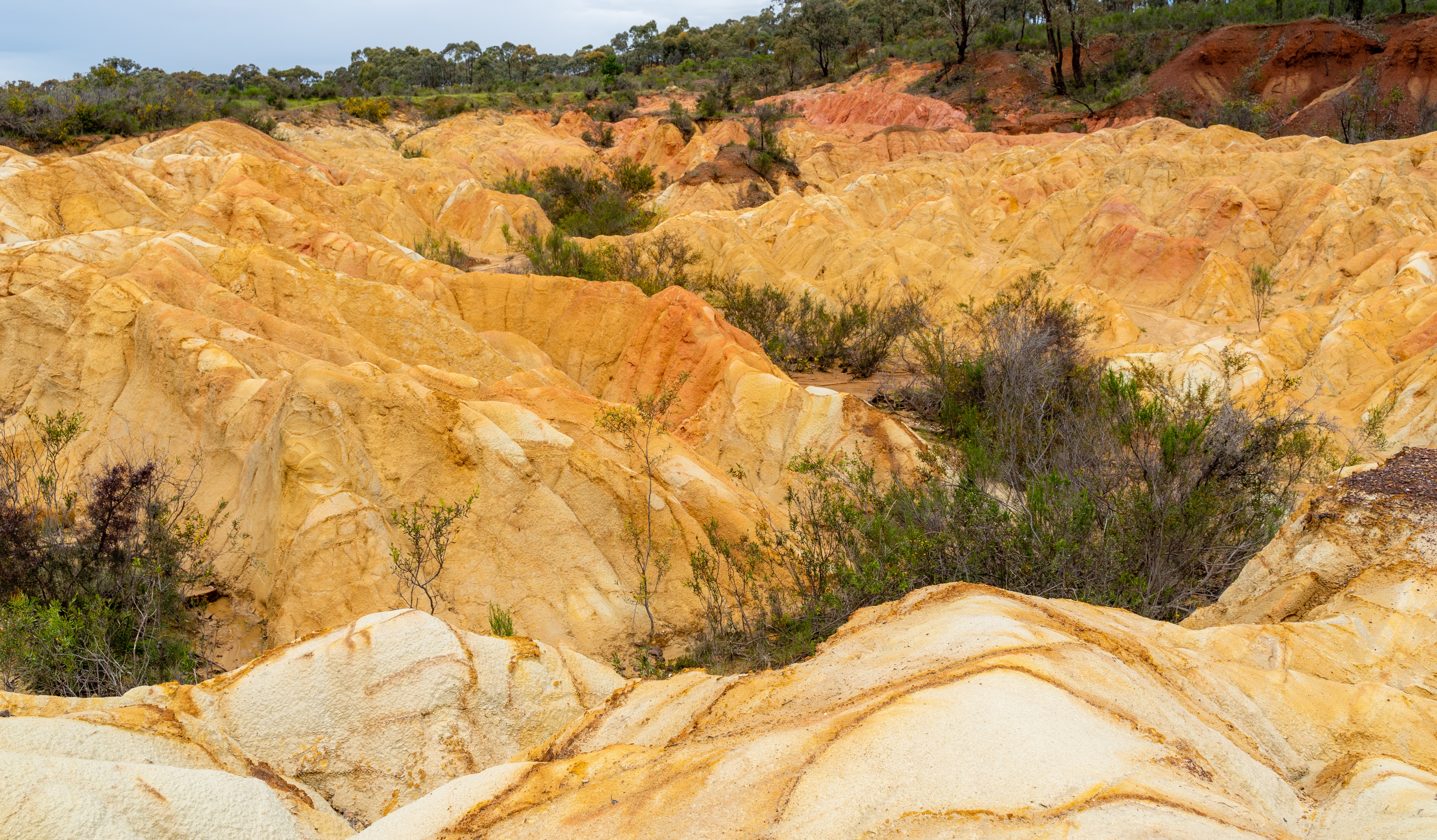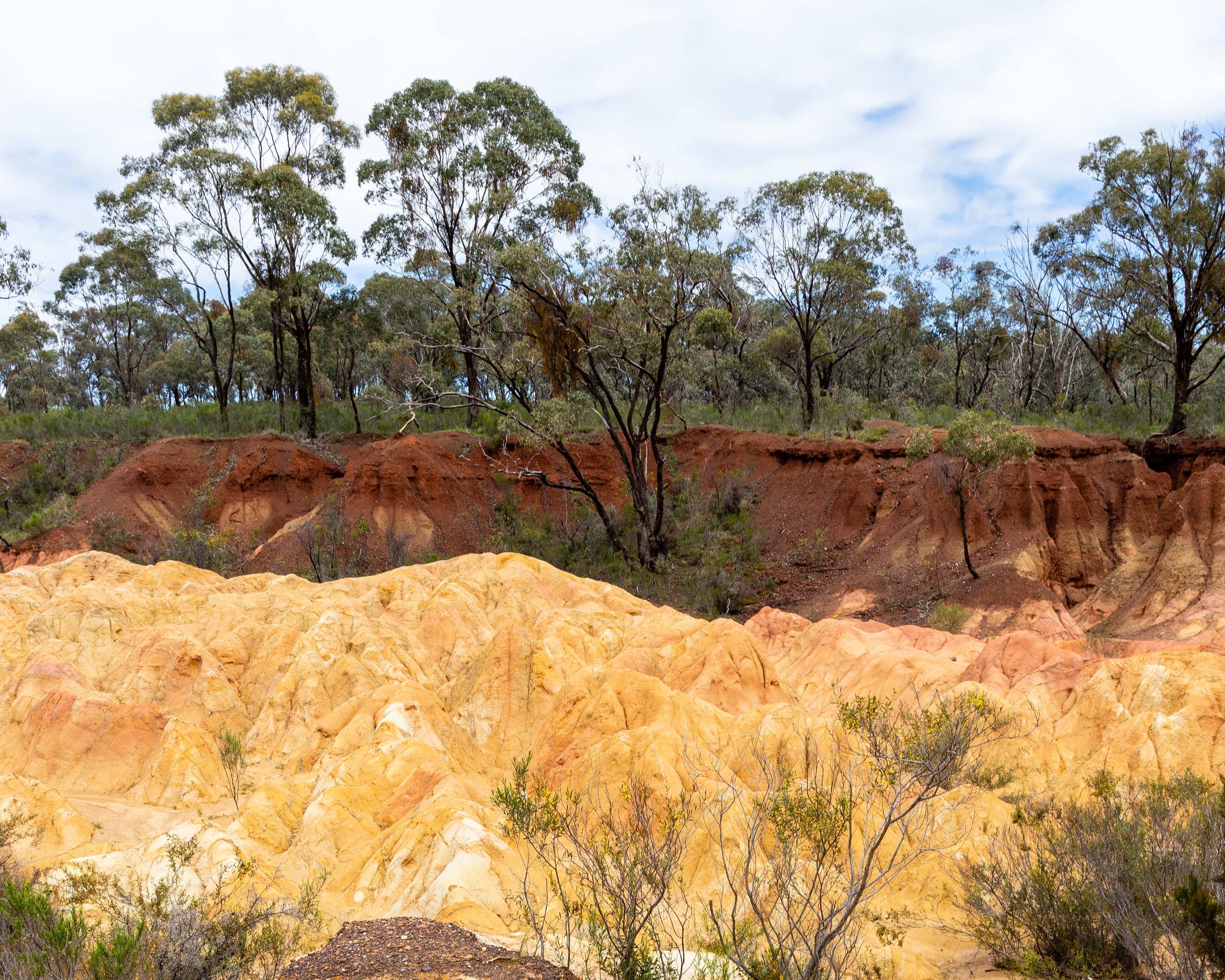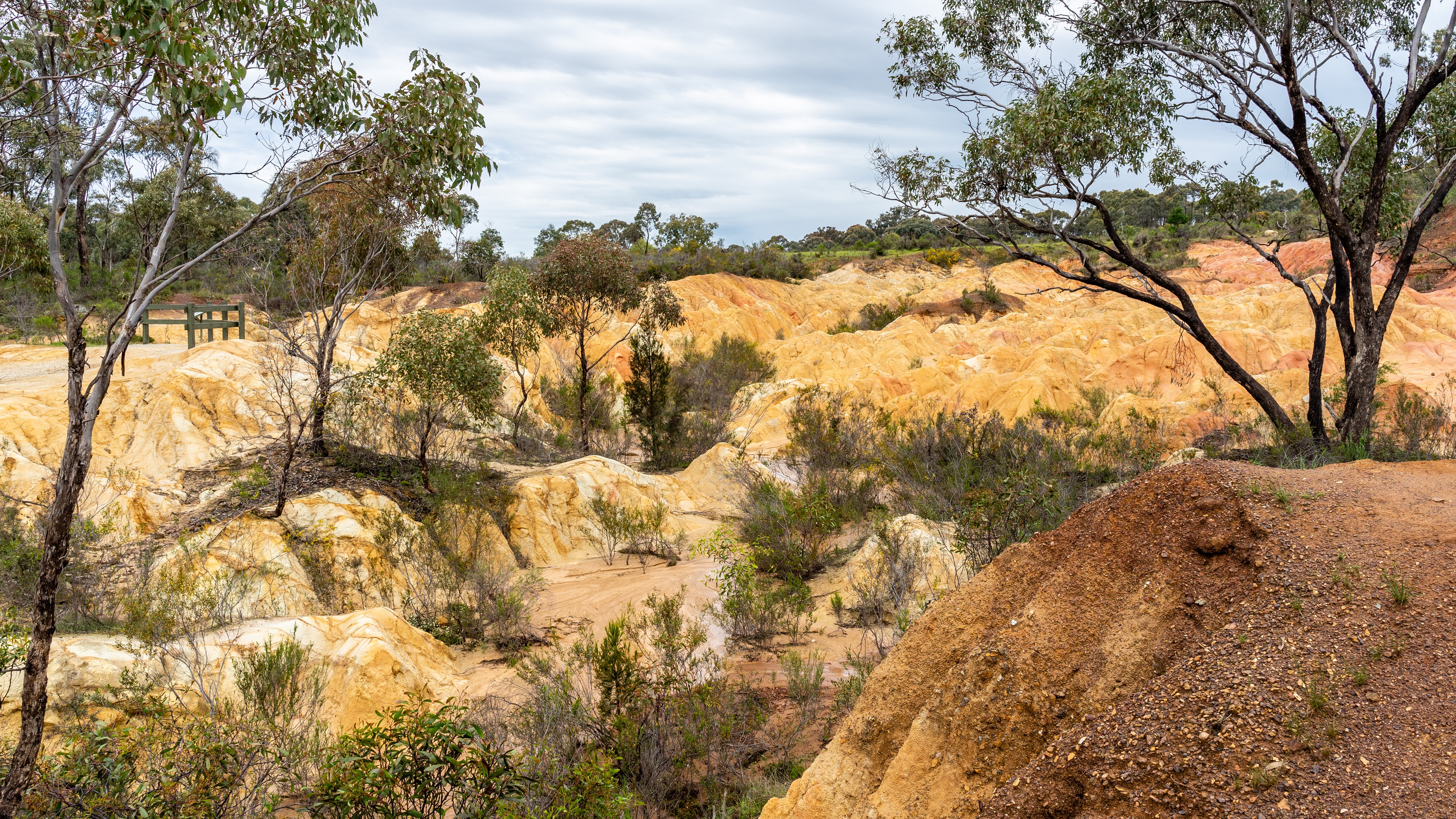Even though we had passed through Heathcote many times in the past, we were unaware of The Pink Cliffs Geological Reserve, until this visit. It is a remarkable area right on the edge of the township and is only a few walk metres from the carpark.
Once a hydraulic sluicing site for mining in the late 19th century, the sluicing washed away the top layer of earth and revealed the colourful cliffs of which you can see today. The hydraulic sluicing at the Pink Cliffs site was carried out in the 1870's - 80's Hydraulic sluicing is a mining method which uses high pressure jets of water to blast away large areas of earth to wash it down to be run through a sluice box, causing gold to get trapped in the sluice while the remaining slurry is washed away. Even though quite efficient this method of mining is causes significant environmental damage and impacts waterways as well as farming operations.
As we wandered through the spectacular mini gorges we saw a lots of small stones throughout the strata, particularly in the dark brown gravel cliffs and forming what looked like little rivers running through the smooth clay of the area. The colourful cliffs consist of a fine clay, which powders to an almost talcum like texture. With all of the rain that had fallen recently, the area was very wet and muddy, which I think caused the soils to lose some of the famed pink colour. When the weather warms up and dries out the soil, I would suspect these subtle pink tones would shine through.
All in all, it was a worthwhile visit as we gained an insight into the good, the and the ugly of Hydraulic Sluicing. Even though the area had an innate beauty, one could appreciate the devasting effects of water erosion.
Once a hydraulic sluicing site for mining in the late 19th century, the sluicing washed away the top layer of earth and revealed the colourful cliffs of which you can see today. The hydraulic sluicing at the Pink Cliffs site was carried out in the 1870's - 80's Hydraulic sluicing is a mining method which uses high pressure jets of water to blast away large areas of earth to wash it down to be run through a sluice box, causing gold to get trapped in the sluice while the remaining slurry is washed away. Even though quite efficient this method of mining is causes significant environmental damage and impacts waterways as well as farming operations.
As we wandered through the spectacular mini gorges we saw a lots of small stones throughout the strata, particularly in the dark brown gravel cliffs and forming what looked like little rivers running through the smooth clay of the area. The colourful cliffs consist of a fine clay, which powders to an almost talcum like texture. With all of the rain that had fallen recently, the area was very wet and muddy, which I think caused the soils to lose some of the famed pink colour. When the weather warms up and dries out the soil, I would suspect these subtle pink tones would shine through.
All in all, it was a worthwhile visit as we gained an insight into the good, the and the ugly of Hydraulic Sluicing. Even though the area had an innate beauty, one could appreciate the devasting effects of water erosion.
| Category | travel photography |
| Settings | f9.5 / @1/125sec / iso125 |
| Camera | Sony A7Mii |
| Lens | Tamron 28-75mm |
| Location | Bendigo Region Victoria |
